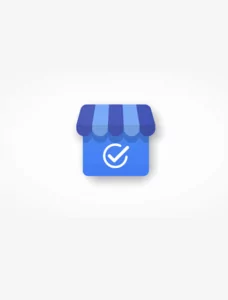
- Red Search
- Resources
- Types of Content
22 Types of Content You Need To Know
-
 Daniel Law
Daniel Law

Since the dawn of digital marketing, content has always been among its vital components. Whatever your marketing strategy is, the only way to engage with your audience is through content.
If your readers find your content interesting, they may engage with it and follow your call to action. That said, it’s all up to the creator whether or not they have what it takes to reach out to their users through content.
That said, content comes in several forms, some relevant and others not. Similarly, every kind of content has a unique and different impact on your target users.
Content can make or break your overall marketing strategy, and as it’s continually changing, you also need to keep up with the latest trends.
To keep your content marketing in perfect shape, we’ve put together 22 types of content you need to know. Read into every content and pick the ones to incorporate in your next content marketing strategy.
1. Video content: it’s here to stay
With the prevalence of video streaming sites like YouTube and breakthroughs in VR and AR, video content was here to stay in 2023. Besides, videos are effective media in keeping users engaged longer than other types of content since they can connect with it easily.
Video content is a powerful platform that can move emotions and drive people to tears or laughs just by watching videos. Hence, it’s a great medium to use for any marketing and SEO strategy.
2. Brand storytelling content: establish deeper connections with your target audience
More often than not, digital marketers and content creators mistake brand storytelling as merely promoting your product and its features.
However, brand storytelling content stands out by simulating or creating an experience for your audience. That’s why many big brands are keen on developing a remarkable storytelling experience.
Furthermore, when combined with video content, brand storytelling can connect with your audience emotionally and convey your message genuinely.
You can craft cunning brand storytelling content by answering questions such as:
- How was your journey to where you are now?
- What motivated you to step up in life?
- And other relevant questions to your niche and message.
Eventually, when your viewers understand and feel your vision and progress, the amount of work poured into building your brand, value, and overall reputation will improve in their minds.
3. User-Generated Content (UGC): engage and interact at all levels
For starters, user-generated content is something that the end-user posts or creates on social media channels, favouring a product or service they enjoy.
Moreover, UGCs do not involve paid transactions and affiliate sponsorships; users voluntarily post their content for your benefit. Also, people tend to trust word-of-mouth more than advertising content.
Contents can be plain texts, blog posts, photos, videos, tweets, and virtually every type of content a platform allows. And with the rise of social media platforms, expect user-generated content to be a part of every brand’s marketing campaigns.
4. Visual content: diversify
The human brain processes visual content 60,000 times faster than plain text. With that, visual content has been a timeless component of digital marketing, from traditional newspaper advertisements to different types of brochures and billboard advertisements.
With more and more people going digital, brands shift towards visual content, delivering appealing and actionable engagements to their target users.
Today’s technological breakthroughs also produced higher-quality graphics and images that almost everyone can create and share on their social media accounts.
Visual content dominates the digital landscape, from AR filters in mobile apps to memes and GIFs. Look into social platforms, and you’ll know how interactive imagery attracts hundreds of thousands of people.
5. Personalised content & data
Most audiences today would turn their heads away from generalised content. Many people are already aware of modern technology’s capabilities, and they want brands to use that technology to provide a personalised experience throughout the platform.
If you plan to reach a vast audience, you’re also marketing to people of different tastes, even if they are within your market. With that, leveraging personalised content and tailoring your data gains trust and loyalty to your brand, leading to better revenues as you give them content they like.
6. Webinars: human-to-human interactions
Webinars show significant potential for digital marketing, especially amid global health crises that encourage people to stay home and opt for online learning. Also, brands conduct free and membership webinars to streamline relevant and vital information.
Webinars are forms of video content that display information and presentations in real-time. As it is interactive content, users can directly engage with whoever is presenting and not just read plain marketing infographics.
7. Podcasts: a new way of marketing
Podcasts are the new rising star amongst the most popular types of online consumable content. With the prevalence of popular podcast streaming platforms, brands project significant marketing growth by producing weekly or monthly podcast content.
Like webinars, podcasts are also engaging and actionable when educating your users about your brand or relevant content.
Besides, adapting to podcasts for brand storytelling helps your audience connect with your brand.
8. Blog posts & articles: traditional yet effective
Long-form blog posts and articles are among the dominant types of content in any digital niche. While videos have more perks than texts, well-written content can drive sustainable organic traffic to your website.
Additionally, blog articles are a gold mine of opportunities to maximise your SEO and keyword optimisation. Brands that have ramped up their blogs for SEO and content marketing saw a 13-fold increase in ROI, making them a game-changer for your marketing strategy.
9. Newsletters: everybody loves a good email
If you want to share consistent and up-to-date information with your readers, then you should consider launching a periodic email newsletter campaign.
You can also enhance your email deliverability by implementing DMARC reports to ensure your newsletters successfully reach the email leads inboxes.
Newsletters have been the cream of digital content delivery and have the most significant ROI potential among B2C and B2B enterprises.
That said, distributing concise and consistent emails to your verified mailing list without spamming them is key to a nurturing newsletter campaign.
10. Thought leadership and POVs
Your audience, including other experts in your niche, wants to hear from you. Relevant and trusted information is vital for any marketing campaign and can help you earn the trust of your target users.
That’s where thought leadership stands out, giving people the information they can trust. You can do this by interviewing experts and leaders in your niche for helpful advice and knowledge. You can also have some experts write on your blog site and ask for their opinion on the latest trends.
11. Social media content
Besides relying on user-generated content and micro-influencers, you must also put your hands on your social media content. Creating an official brand account on social media allows you to make visual content specific to your channels.
Additionally, social media sites are becoming brand-focused search engines. That’s because 40% of internet users visit social media sites to look for new products and brands.
When you verify your page and earn a Twitter, Facebook, or Instagram badge, you can significantly boost your trust rating and have more people engage with your page through likes, shares, comments, or DMs.
The performance of Facebook Ads in some industries is highly lucrative and helps generate great ROI.
12. Case studies: showcase how your product or service stands out
Remember that not all niches can benefit from case studies as much as others. Besides, creating one takes significant time and resources. But when done correctly, you can offer a substantial amount of relevance and weight to your readers, especially when you publish success stories highlighting your brand and services.
Case studies remarkably benefit B2B brands more than others. That’s because 74% of B2B consumers trust case studies more than other content marketing strategies, helping them make informed buying decisions.
13. Interactive content: be creative
Unlike webinars and other types of content that mainly provide information, interactive content prioritises engagement and interaction above all else. Its primary purpose is to provide fun and compelling interactions with users, getting them involved in marketing.
Conduct polls on social media about a unique colourway for your product line or ask people about their experience with your services.
Try adding new and unique pieces of interactive content to engage and excite your audiences. Think about quizzes, interactive maps, easter eggs, and others.
14. Ramping up on E-A-T: become the authority in your niche!
Google wants content creators to focus on expertise, authoritativeness, and trustworthiness. E-A-T is a vague guideline for developing engaging and actionable content for your digital brand.
When writing content for any website, you can prove your brand’s E-A-T by:
- Gaining backlinks and mentions from authoritative sites
- Publishing E-A-T info on your page, including author credentials and an about page
- Build links to trusted sources for your content’s facts, data, and statistics.
- Continually update your content with accurate and up-to-date information.
15. Purposeful content: producing content of value for humanity – not just your brand
Purposeful content prioritises your users’ needs over your sales objectives and promotional message. Hence, winning in the SERPs and readers means upping your content marketing to reach your audience better.
Regardless of your overall marketing strategy, it would be best to utilise every drop of resources to create content with a purpose, not only for keyword optimisation but for conveying your message.
16. Consumer-first content: think along the lines of FAQs
Besides content with a purpose, consumer-first content is another way of creating content that puts customer needs above sales. These types of content are currently determining factors for expanding businesses and successful brands.
You need to understand that forming a robust bond with your users means gaining their trust by offering assistance, information, and engagement without a catch.
Aside from that, consumer-first content that integrates with other content types is the strategy that will rank on top of Google SERPs.
17. Evergreen content: topics that will stand the test of time
Evergreen content is unique and can significantly build thought leadership and increase subscribers.
A compelling example of evergreen content is an ultimate guide that stands out from regular blogs as it is more comprehensive and detailed than short blog posts.
A piece of evergreen content can have as much as 10,000 words (see our best word count guide for SEO), breaking down a complex topic into several chapters, each with a different URL page. Hence, it offers tremendous value for your traffic as users don’t have to visit other sites for information.
18. White papers: establish confidence and further reinforce the position of your brand
Aside from evergreen content, white papers are information-dense content that covers data and statistics on a relevant topic. While long-form content covers broad topics with keyword optimisation, white papers focus heavily on details and facts.
Similarly, writing white papers might take a while and can be more costly than other content. Despite that, white papers tend to be more relevant and trustworthy than blog posts, making them crucial for every long-term content marketing strategy.
19. Infographics: condensed, short and snappy
Infographics were all the rage half a decade ago. They’ve certainly died down a lot since then. However, it’s undeniable that they still provide a lot of value to users looking to consume content.
Infographics are shareable, and people can digest them easily thanks to appealing designs and readable information.
Infographics also create stunning visual representations of data and statistics, making them easier to interpret and analyse than expansive strings of facts and figures.
Hence, if you have information relevant to your brand, turning it into visual infographic content is highly effective in driving more traffic to your site.
20. How-to guides: inform and educate
Take a minute to type “how-to” in Google search, and you’ll find countless search suggestions within seconds. Besides, whether people want to learn how to tie a shoelace, set up a smartwatch, or save a YouTube video, crafting duplicable how-to content for your niche is extremely helpful.
Analyse what your audience needs to learn in your niche and how you can provide them with a guide.
If you can execute it properly, you can produce content that goes viral in your brand’s industry. Also, remember to add visuals and interactive graphics.
21. eBooks: who doesn’t like free content?
Not everyone acknowledges the potential of eBooks, but they are excellent lead magnets and will stay that way for quite a long time. People step back from eBooks because they take time and money to develop, but some prefer outsourcing to freelancers.
Like white papers, you can write a 5 to 40-page eBook to offer value. If you write any eBook, include clear, actionable steps the reader can take right after reading your book. This will ensure that they’re able to apply quickly and see results.
22. Template and checklist downloads
The internet is an ocean of downloadable files, templates, and tools. Many platforms offer template and checklist downloads as their exceptional lead magnets as well. Not only are these downloads actionable, but they can be helpful resources that your users can use repeatedly.
Furthermore, developing a template or checklist won’t consume as much time and resources as the previous content types.
Maintain a clean and appealing template design with your watermark or branding on it. You can offer these to people who signed up for an email subscription.
Conclusion
The internet offers a plethora of content for every user and brand. Content comes in various shapes and complexity, but most share a similar objective of providing relevant and actionable information to your target audience.
At Red Search, we are an award-winning SEO agency in Sydney focused on crafting innovative SEO services for our clients. Speak to our team and let’s chat about growing your business.
Written by






